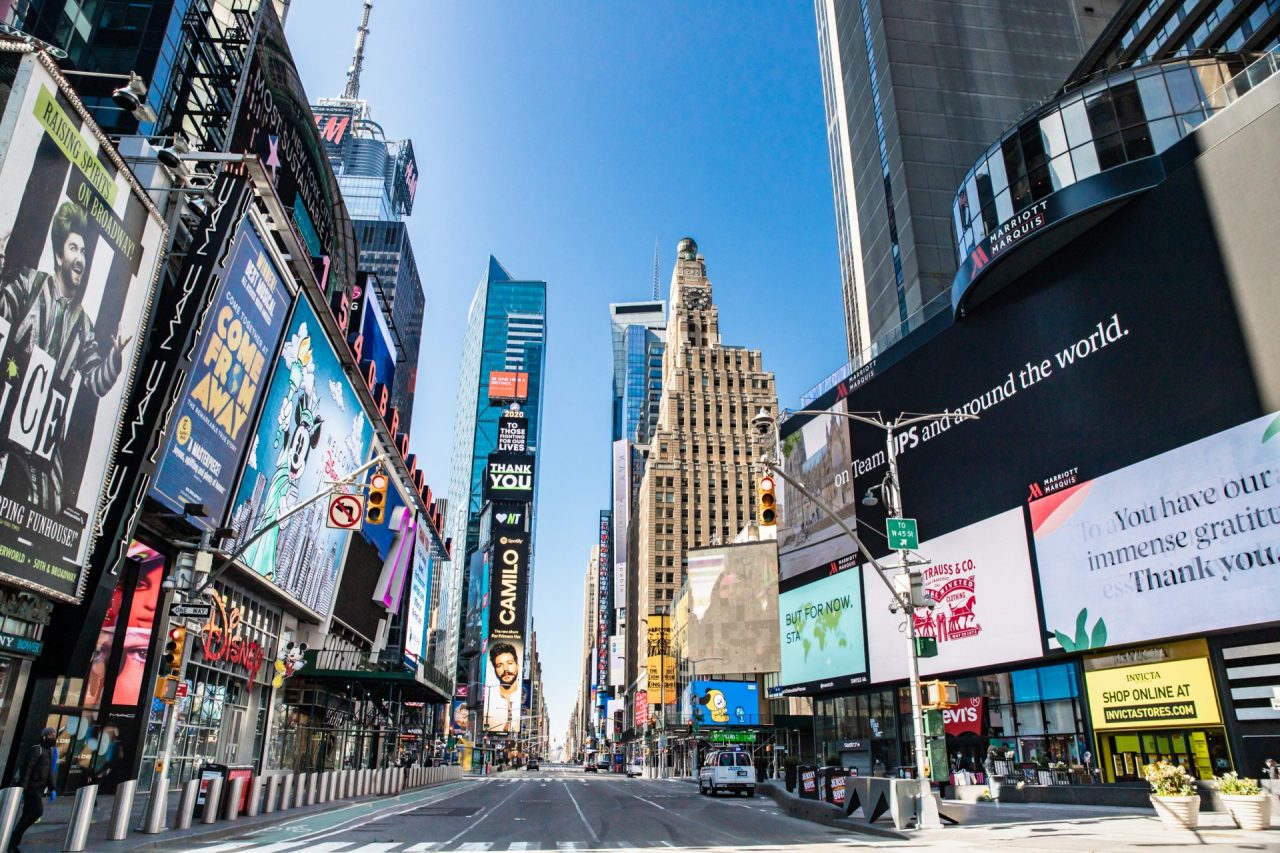Stores are closed on Fifth Avenue. The trendy restaurants of Greenwich Village have gone dark. Times Square is empty as never before. New York City, one of America’s hardest-hit cities during the Covid-19 pandemic, seems to be frozen — an unusual condition for a city always on the move.
And for the first time, some of the construction sites — with their jackhammers, cranes working even at night, workers dangling from scaffolding – have stopped too, and are no longer the noisy soundtrack for anyone strolling through the streets of the Big Apple.
This silence has a cost to the city’s economy, according to the New York Building Congress. The city’s construction industry association says that construction spending in 2020 will drop by $4.1 billion, from $60.6 billion in 2019 to $55.5 billion in the current year.
The figures reported in the 2020-2022 New York City Construction Outlook are an essential guide to understand the price being paid by the city, but also to what road it can take to get back on its feet in the coming years.
New construction in New York: who pays the price of Covid-19?
Not just retail, culture, catering. The impact of the ban on tourism imposed by measures to contain the global pandemic, combined with the rules on social distancing for New York residents, goes beyond the service sector. Industry is also suffering, and today, in the absence of a vaccine capable of defeating Covid-19, the construction sector is also stepping on the brake, slowing down work on large projects already underway, and delaying the start of new ones.
Non-residential projects are paying the highest price: major works; infrastructure related to sports and entertainment; new hotels. Most of the losses are concentrated in this sector, where revenue has fallen from $21.2 billion in 2019 to $16.6 billion forecast for 2020.

Getting started again in 2021
The slump suffered in these months should be over by the end of the year, according to the New York Building Congress. This is also the city administration’s goal.
This optimism stems from the street, where construction sites (even the largest ones) seem close to re-opening, but also from forecasts of 2020-2022 in New York City Construction Outlook.
According to the report, total construction spending between 2020 and 2022 is expected to reach $168.5 billion. The number of large projects will increase and as a consequence the number of jobs will recover after dropping to 128,200 in 2020 and then rise to 136,650 in 2021, reaching 140,200 in 2022.
These numbers offer a window of optimism on the future of the Big Apple, also thanks to the role and support promised by public institutions.
New constructions in York City gets back to work
The optimism about the future at New York Building Congress comes from the city’s response. The New York City Department of Buildings (DOB) has issued a release in June of the guidelines to be followed to keep the construction sites open even during a resurgence of the pandemic. These guidelines accompany the New York State Department of Health’s rules and confirm that major construction projects can open again if they respect the most stringent safety measures to avoid contagion among workers.
The support from the city administration, state government and federal government is key in understanding the situation. While between 2017 and 2019 public funding accounted for 31% of the funds allocated to major infrastructure projects in New York, in 2020 the public share rose to 40%. As the role of the private sector shrinks, the role of the state and federal governments becomes more important for the success of projects in the Big Apple. Decisions at two agencies whose funding depends heavily on the federal government will be important: the Port Authority of New York and New Jersey and the Metropolitan Transportation Authority (MTA).
In terms of sustainable mobility, the MTA unveiled a $51.5 billion plan for 2020 to 2024, which calls a massive overhaul and the construction of new metro lines and the modernisation of existing ones.
The plan has been put on hold, but the MTA says it will be revised to push ahead with projects according to their priority for citizens.
So New York City slows down, but does not stop. Not even Covid-19 seems to affect the global appeal of the Big Apple as one of the best places to invest. Hence the decision of the Australian company Lendlease, controlled by the state pension fund Super Aware, to support a $718 million project to build 800 new housing units in Brooklyn accompanied by the development of a new waterfront area. From here, just like from the shores of Williamsburg, it is possible to admire the Manhattan skyline. Waiting for its streets to begin to bustle with life again.

